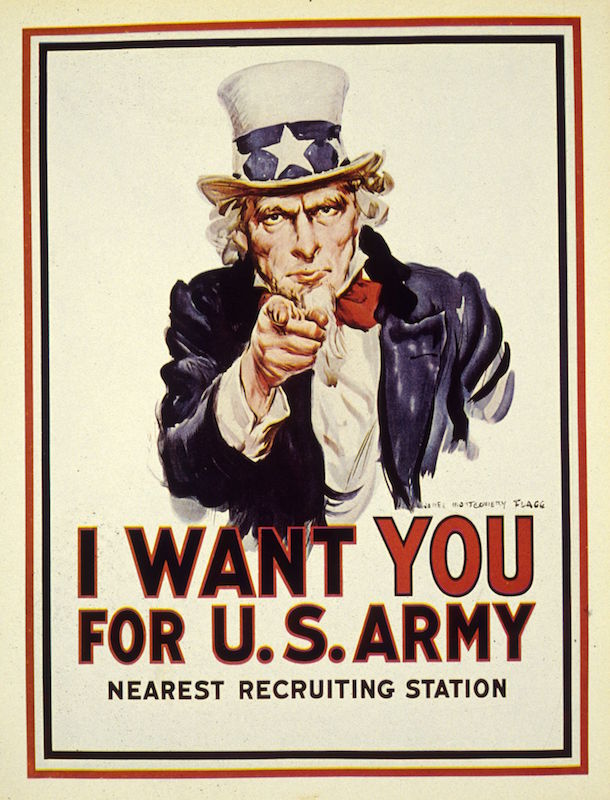As we, as a society, move forward, so does technology. Many actions which were previously conducted physically can now be conducted online with the same efficiency and consequence if not greater than. Included in such actions is propaganda, which is not anything new to America.

Most americans know about the Uncle Sam poster during World War 1, where the U.S. army used propaganda to light passion and dedication in the country towards enlisting in and supporting the army. Even after more than a century, this poster is still talked about in many schools and used as a perfect example of propaganda and its effects. Posters and newspapers were used internationally, often by countries on opposite sides to paint the other as the “bad guy.” This type of fight is still used today, yet is often caught digitally rather than with posters.
As technology has advanced, social media has been a perfect opportunity for political campaigns to thrive and spread their message. However, even with teams built specifically to promote a campaign on social media, people have decided that they need more ways to extend their reach. This has led to the use of bots, which are artificial accounts used for a certain purpose: to boost the visibility of a topic through trending means. In politics, bots are often created to promote a campaign while using trends to boost themselves at the top of social media platforms. Twitter is a very popular breeding ground for bots and has a large problem dealing with them. In the recent 2020 election, there was much larger activity with bots than actual humans on Twitter. This means that there were so many bots posting or reacting that they largely overcrowded an app with over 100 million daily users.

With such large bot activity, one can only wonder what they could possibly be doing to overtake human activity. To put it briefly, bots were seen mostly associated with hashtags such as #Qanon and #scamdemic. The first hashtag involves a conspiracy stating former President Donald Trump and his administration spent much of their time fighting a large organization involved in human trafficking. This was expanded to including democratic representatives and even hollywood to be a part of the cult. The second hashtag was used to state that Covid-19 was a “liberal scam” used to hurt Trump. Although both hashtags were just rumors and lacked any substantial evidence, they both became infamous and largely popular on twitter, especially during the 2020 election. The surprising detail is that around 1 in 4 accounts that interacted with these hashtags and similar ones were bots, not real people. That was a very dangerous discovery as this means people were purposely bringing up these hashtags to disrupt the political sphere.
Although there are many methods that Twitter and third party organizations are using to try to mitigate bot production, bots are still a large problem to this day. Even with politics involving the midterms coming up, bots have been more active than previously on many different platforms. Although many are banned or removed, many still exist and the best way to watch out for these bots is to watch for how they talk and if what they are saying has any evidence or foundations. Even though this method is not 100% effective, it can stop many bots from receiving engagement where they shouldn’t. Although bots have become an unavoidable problem in today’s online community, they can be heavily mitigated if people are careful with who or what they are interacting with.
Caldarelli, Guido, et al. “The Role of Bot Squads in the Political Propaganda on Twitter.” Nature News, Nature Publishing Group, 11 May 2020, www.nature.com/articles/s42005-020-0340-4.
Guglielmi, Giorgia. “The next-Generation Bots Interfering with the US Election.” Nature News, Nature Publishing Group, 28 Oct. 2020, www.nature.com/articles/d41586-020-03034-5.
Knauer, Kelly. “World War I Anniversary: Story Behind the Uncle Sam Poster.” Time, Time, 6 Apr. 2017, time.com/4725856/uncle-sam-poster-history/.
Selk, Avi, and Abby Ohlheiser. “How Qanon, the Conspiracy Theory Spawned by a Trump Quip, Got so Big and Scary.” The Washington Post, WP Company, 26 Oct. 2021, www.washingtonpost.com/news/the-intersect/wp/2018/08/01/how-qanon-the-conspiracy-theory-spawned-by-a-trump-quip-got-so-big-and-scary/.